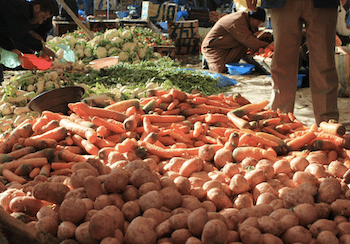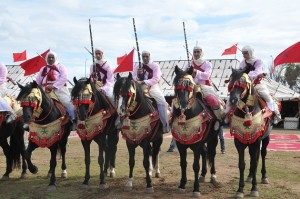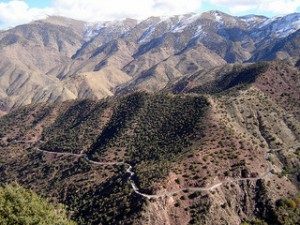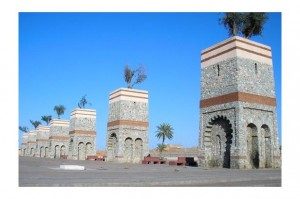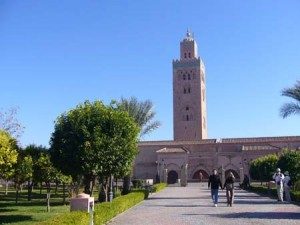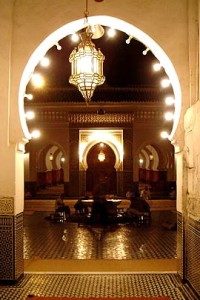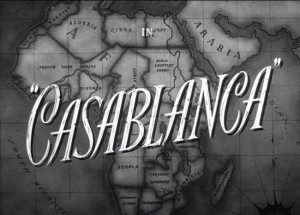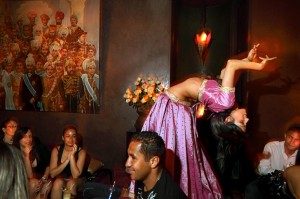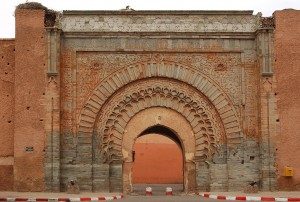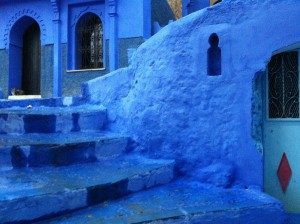By visiting local souks outside Marrakech you can experience local Berber country life and absorb the character of the marketplaces where they meet each week. This is an important social occasion where local producers sell their wares including, fruit, vegetables and livestock. Merchants from Marrakech sell essentials such as: tea, coffee, sugar, packaged foods, cooking items, clothing and electronics. You can also come across carpets, jewelry and pottery generally cheaper than in Marrakech. There are many things available to buy from the souk: henna, spices, rugs, Berber slippers and sandals, pottery, Berber djellabahs for men, dresses for women and handmade wooden kitchen utensils.
Traveling to Morocco during one of its incredible festivals is a great way to explore Morocco, haven an up close experience with people and better understand Morocco’s varied traditions. Visiting a festival in Morocco as part of a private Morocco tour can done year round given Morocco offers a wide range of festivals and mousseums (traditional local celebrations). Many regions in Morocco from the seaside bastion El Jadida, the Portuguese Port and Berber City of Essaouira and the city of Fez all have celebratory festivals and mousseums. The Fez Festival of World Sacred Music which takes place each June is one of Morocco’s most popular festivals along with Mawazine of Rabat. Morocco’s Festivals have much to offer ranging from elaborate fantasia horse shows to exotic local music and are all held out doors in heart of of old Moroccan cities which make the experience of traveling to Morocco’s festivals all the more worthwhile.
The Tizi N’Test pass from Marrakech, Morocco to Taroudant leads you over the Middle Atlas, heartland of the Berber people, through hair raising hair pin bends at 2,092 meters overlooking valleys and gorges, small fields and mountain villages. It was here from Tin Mal, the site of the famous Berber mosque that the Almohads rose up and took Marrakech from the Almoravids in 1152.
Marrakech has seven patron saints who were Sufi mystics and Islamic scholars who are said to look after the city and each has a zaouia which is a mausoleum where pilgrims and those wishing for the help of the Saint or Sidi can pray at his tomb. The larger zaouias in Marrakech have mosques and they are charitable religious foundations who care for the sick, blind and crippled as well as orphans or the old and infirm. The spirit of charity is an important part of the role of the saints who were Sufi mystics and pilgrims give donations to the Zaouia. The concept of the Marrakech seven saints in Morocco predates Christianity and Islam and Cueta (or Sebta meaning seven),Jebel Hadid and Fez all have seven saints.
The famous Koutoubia Mosque dominates the skyline of Marrakech. Koutoubia Mosque is 77 meters high, including it’s majestic minaret, and was built in 1158 by the Almohad Caliph Abd al-Mu’min (1094–1163) then completed by his grandson the Almoravid Sultan Yacoub El Mansour in 1195. Caliph Abd al-Mu’min also built the Giralda Tower in Seville and the Hassan Tower in Rabat which was never completed. The towering square Koutoubia minaret in Marrakech is all the more striking because the limestone walls remain undecorated by modern restorers.
Morocco ‘s 4th Imperial City of Meknes is often left off tourist itineraries. Meknes is a UNESCO World heritage site and has massive imposing ramparts, 25 kms long, built by Sultan Moulay Ismail, of the Alaouite dynasty, who ruled Morocco from 1672-1727. He chose Meknes as his capital because of the resistance and intrigue he encountered in Fes and Marrakech. He successfully defeated warring tribes and religious brotherhoods in the south uniting the country and repelling European invaders in the north, liberating Tangiers from British rule. The Sultan Moulay Ismaeil also withstood the Ottoman invaders who took Tunisia and Algeria.
Two older well known films featuring Morocco are Hitchcock’s The Man Who Knew Too Much which features James Stewart and Doris Day and was made in 1956. It has all the tense drama of a Hitchcock thriller and has a scene on the Jemma El Fna square where Hitchcock makes a cameo appearance looking at acrobats on the Place in a cafe as a man is stabbed nearby. The French built fortress like police station on the square features prominently in the film. It was made in the same year as Morocco gained independence and captures some of the excitement of the period.
Marrakech, often referred to as the Paris of Morocco and the premier Moroccan city of night lights and romance has something of a reputation for its nightlife. Marrakech has a reputation for seedy bars and expensive discos in high end hotels with groovy, Ibiza-style discos and belly-dancing along with top end dining experiences that can be had on rooftop terraces.The best places for nightlife in Marrakech are in the wealthy Hivernage district’s 5 star hotels, Sofitel So Lounge, Hivernage Hotel and the Comptoir Darna Cocktail Bar. Low lighting, scented candles, and Moroccan lamps are strategically placed in the ground-floor restaurant of Comptoir. Diners can choose from low-lying tables under the Berber tent, or inside the charcoal and ocher restaurant proper. There is a small garden where you can lounge on the lime, orange, and red cushions and heavy Berber carpets. A wide, central staircase leads up to the real reason to come here: the harem like bar decked out in charcoal, orange, and burgundy veils where resident and guest DJ’s spin the latest in Euro-Arabian dance music with exotic dancers.
A Walking Tour through Kasbah, one of the Marrakech Medina’s Best Neighborhoods offers exploration inside its historic walls. Kasbah’s is a local Moroccan neighborhood that boasts Moroccan street fare, an authentic shopping experience, ancient sites and is the perfect pit stop for teat at sunset. Once a neighborhood that was on the edge of ruins, Kasbah, in the Marrakech medina is now the place to be.
Chefchaouen lies inland from Tangier and Tetouan. Chefchaouen is a unique Moroccan city known for its blue and white washed medina walls that surround it. Filled with old world charm, a walk through Chefchaouen’s blue alleys evokes being in a magical story book, similar to Aladdin and the magic lamp from One Thousand and One Nights. An early morning stroll through Chefchaouen’s winding streets is a great to discover this Riffian town famous for fresh goat cheese, local crafts and peaceful setting.

